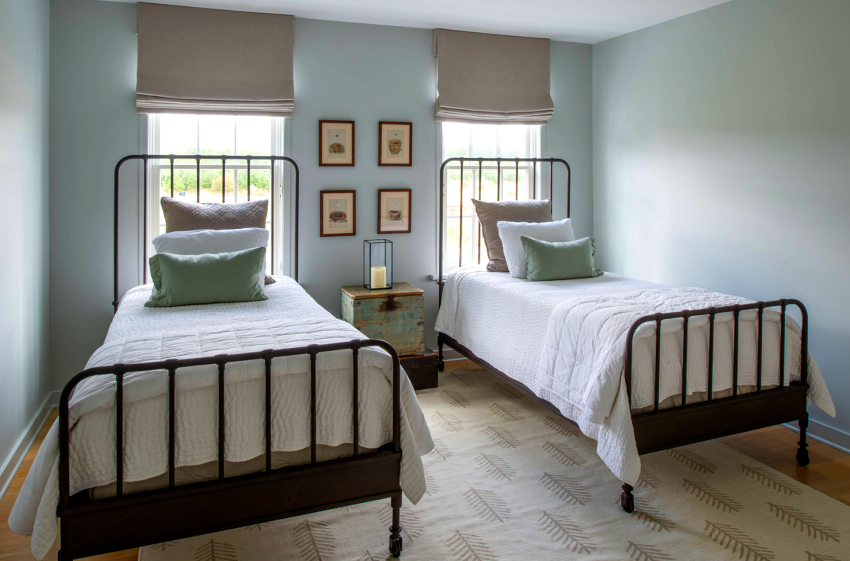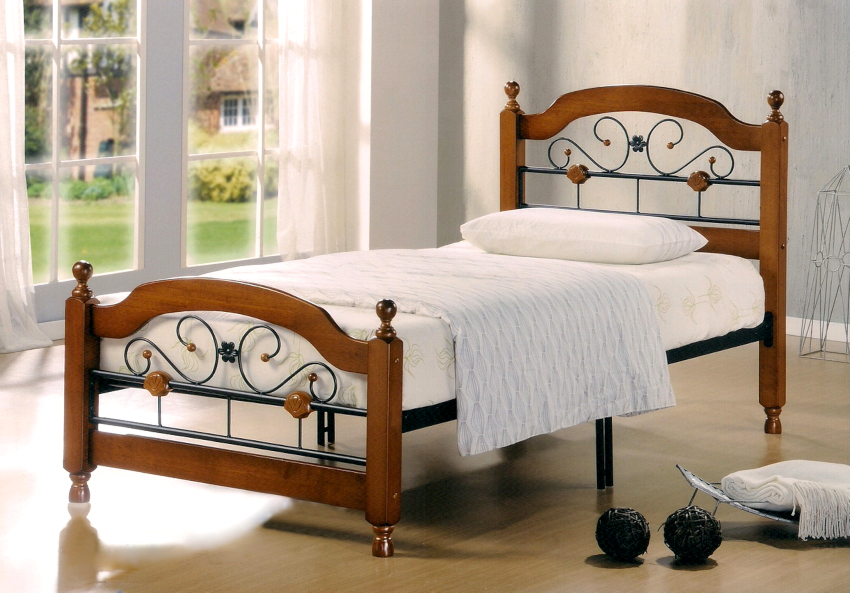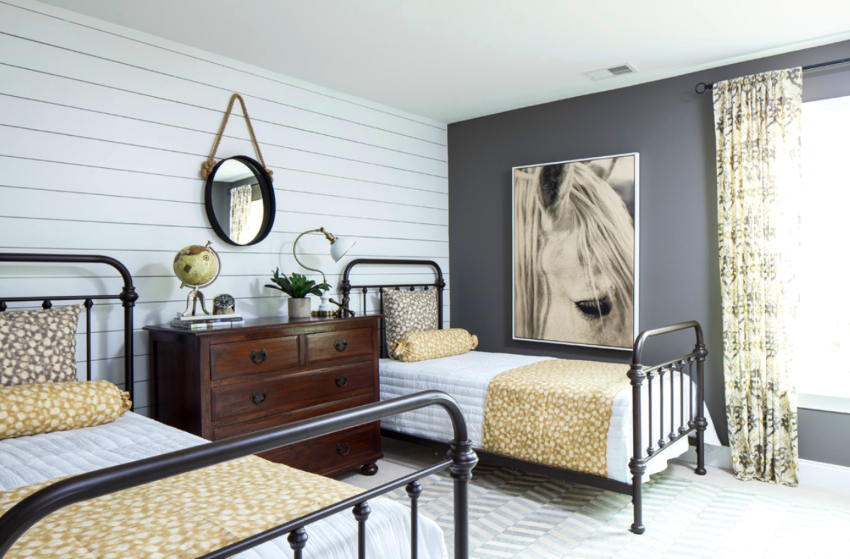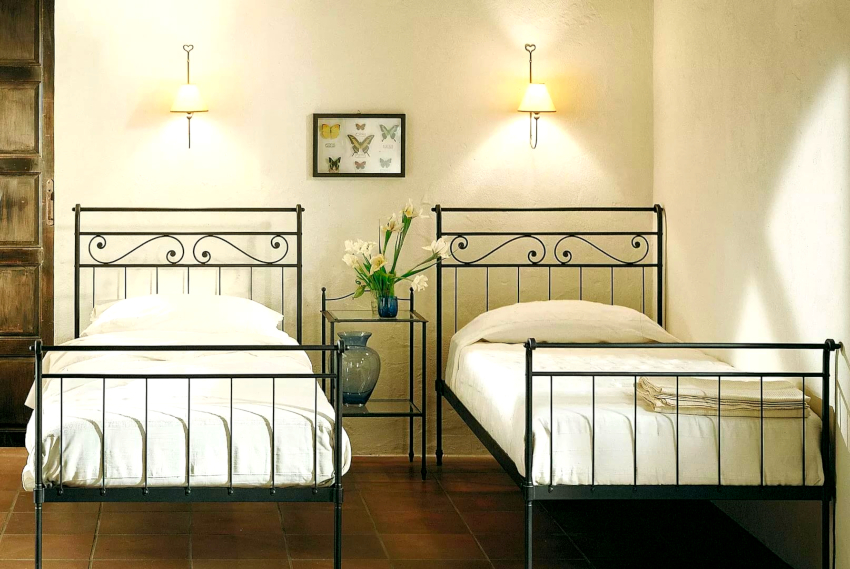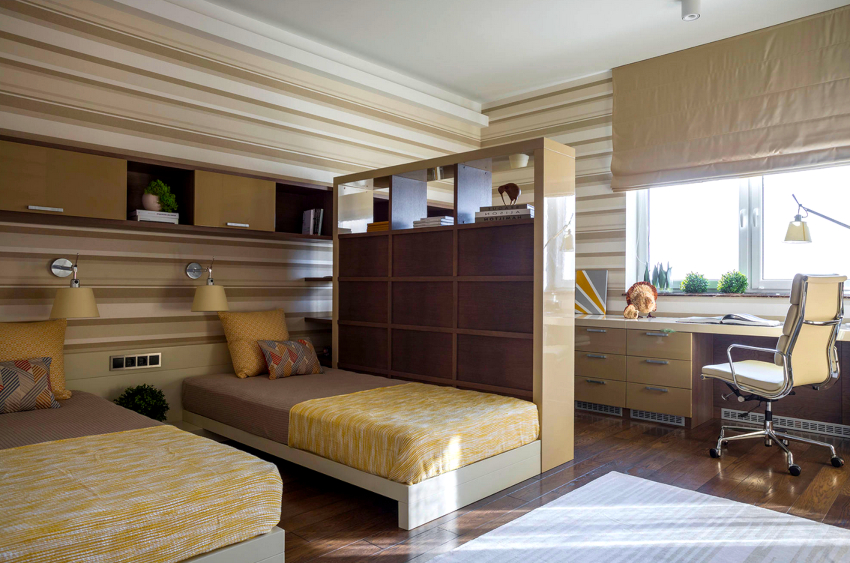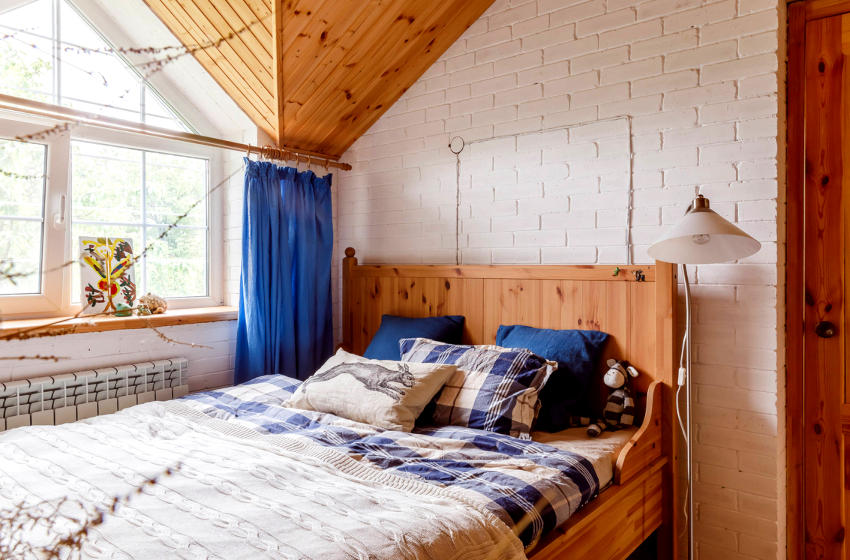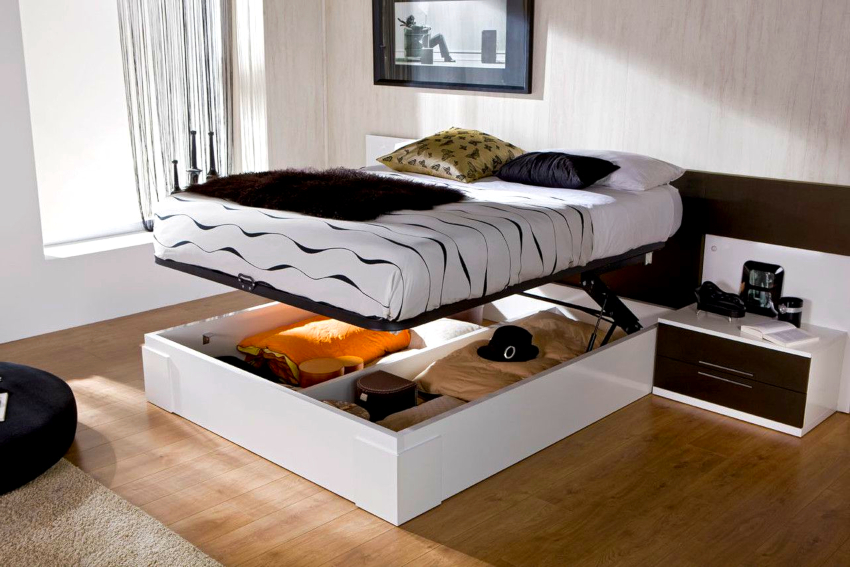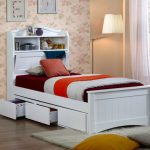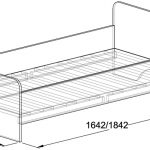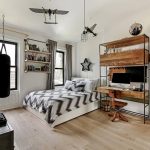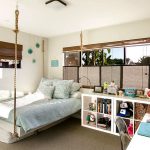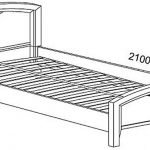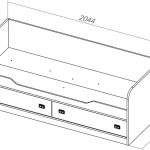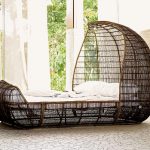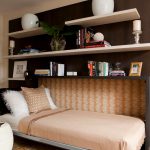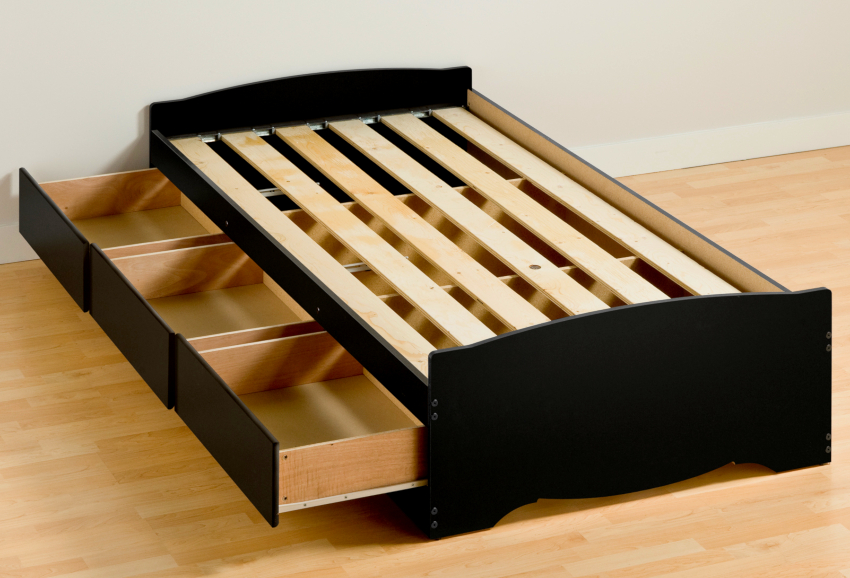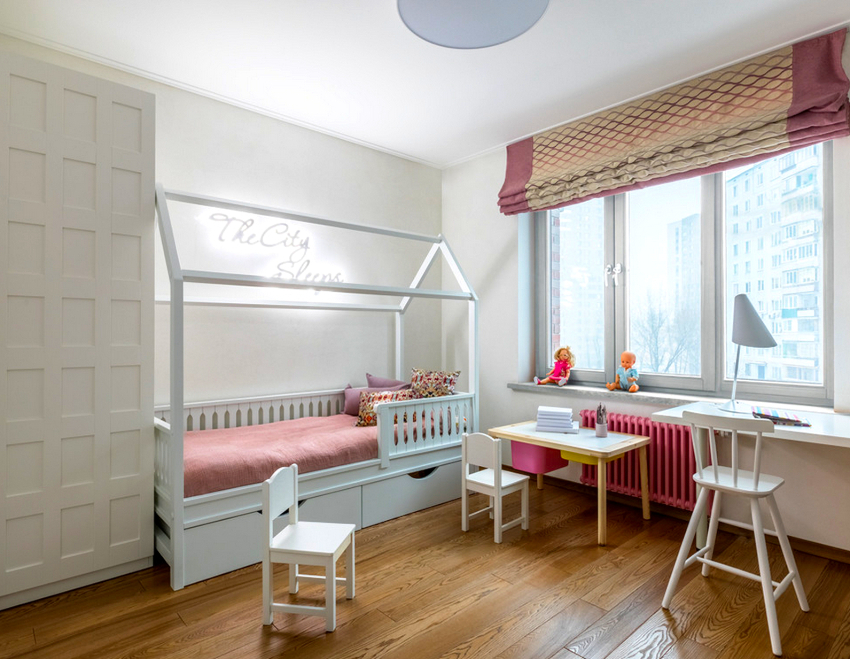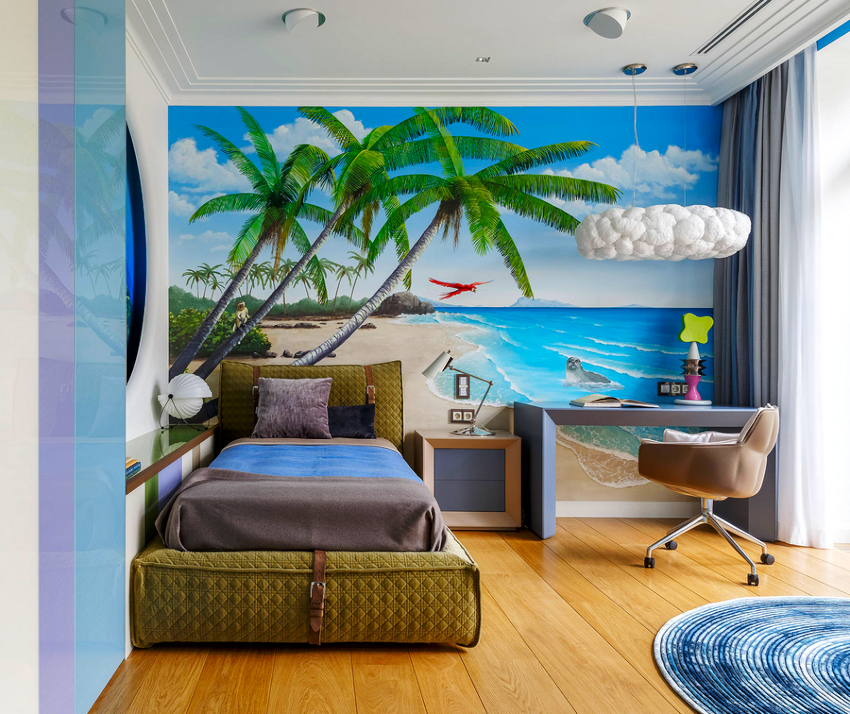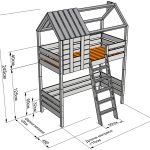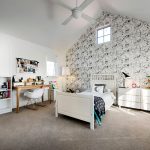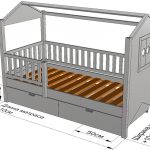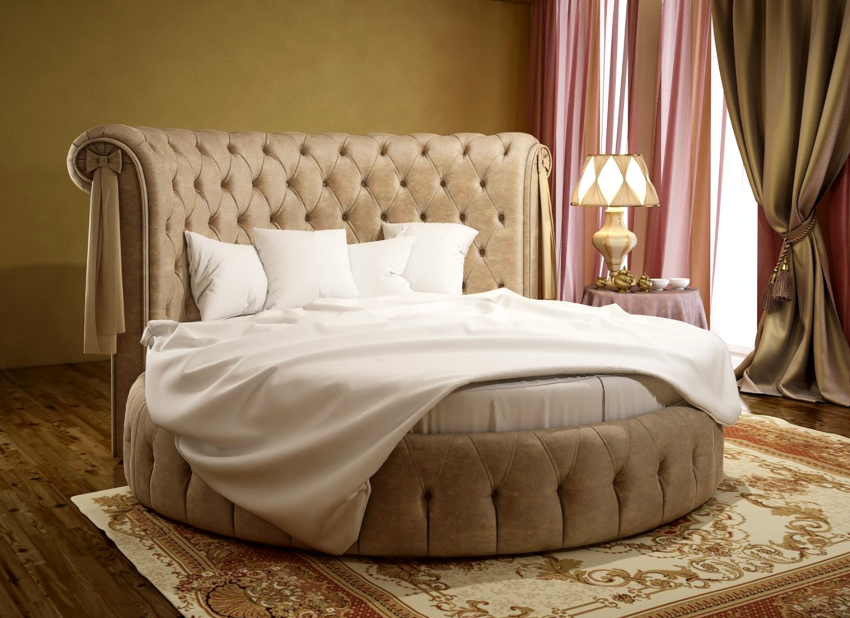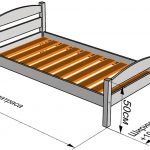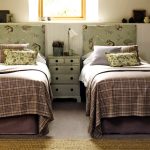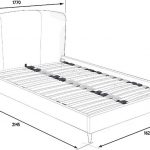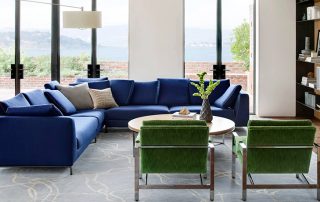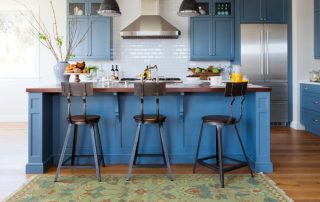Choosing the size of a single bed, you need to take into account not only the parameters of the room, but also the individual characteristics of a person: height, age and physique. Individual sleep habits are considered an important selection criterion. For example, if a person likes to sleep with their arms outstretched, then one should not save on the width of the product. The height of a person depends not only on the length, but also on the height of the bed, which will contribute to a comfortable getting up.
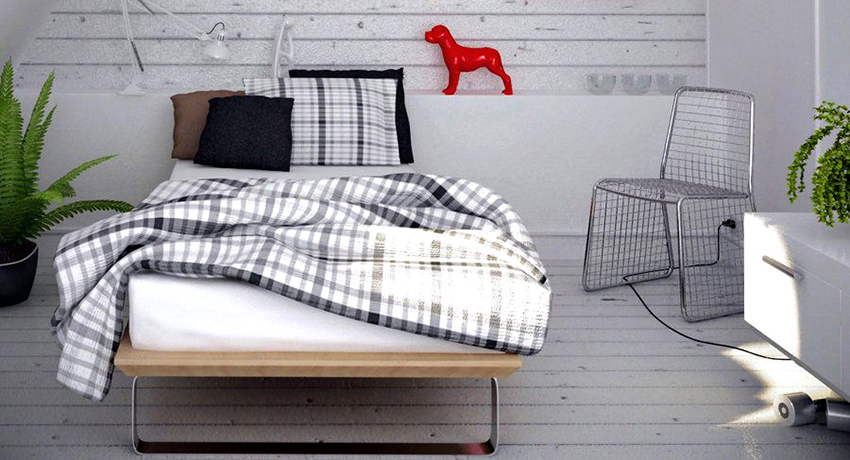
When deciding on the size of a single bed, you need to take into account the parameters of the room and the physique of a person
Content [Hide]
- 1 What you need to know to determine the correct bed size
- 2 How to determine standard bed sizes based on different calculation systems
- 3 Other parameters of a single bed or single bed, which are taken into account when choosing
- 4 Structural elements of a one-and-a-half bed and a single bed
- 5 Features of choosing a bed for a children's room
- 6 Sizes of semi-double beds with a non-standard shape
- 7 How to correctly match the parameters of the bed with the mattress
What you need to know to determine the correct bed size
When purchasing a bed for sleeping, it is not enough to simply consider the quality of a wooden or metal frame. It is important that the person who will sleep on the product feels comfortable and comfortable. In the event that he does not have enough space or his legs hang down, then he will not be able to sleep normally. When choosing a one-and-a-half or single bed, you need to pay attention to several aspects.
Room area. Before buying a bed, you need to carefully measure the room so that the product does not take up too much space. This is especially true for rooms that are small in size, where each meter needs to be mastered as efficiently as possible, and the bed must be placed conveniently.
Human dimensions. When calculating the optimal length and width of the product, you need to take into account the height and physique of the person who will sleep on it, and add 20-30 cm to each parameter.It is better for this not only to carry out calculations, but to go straight to the store and try to lie on beds of various sizes.
Sleep habits. If the bed is selected simply based on the size of a person, without taking into account his habits, then you can not guess with the choice of design.People who spin in their sleep, spread their arms and legs, it is recommended to give preference to wider options.
Criteria for choosing a single bed or a semi-double bed
Having identified the main indicators, you should pay attention to other points.
Construction type. In a small bedroom, it is not recommended to install a 1.5 bed, the size of which will interfere with comfortable movement due to the presence of a large number of drawers. It should be remembered that there must be enough free space in the room to allow easy movement.
Bed design. All pieces of furniture should not only fit in size, but also correspond to the general style of the room. Shopping centers offer a wide range of products in various shapes. Therefore, if you want to put a bed in the nursery, for example, in the form of a spaceship, this is not difficult to do.
The quality of the materials used in the assembly. A metal frame is considered the most durable option, but if solid wood is used for its manufacture, then such a frame is also quite reliable. Lamellas are usually made of high quality glued MDF.
The number of people who use the bed. A one-and-a-half product is considered a universal option, which will be enough both to accommodate one large person on it, and to sleep two people of average build. For families with small children, it is better to choose at least double options as a family bed.
Useful advice! It is not recommended to save on this piece of furniture; you should choose models made of high quality materials. After all, a bed is bought no more often than once every 10 years.
How to determine standard bed sizes based on different calculation systems
The size of a 1.5 sleeping bed (or single bed) will depend on the characteristics of the frame, the presence of additional mechanisms designed for lifting or sliding. The standard length of most products varies from 190 to 210 cm. When choosing a bed size for a child, the length usually varies depending on age and ranges from 120 to 200 cm or more.
Before buying a bed, you need to know that there are 2 different measurement systems for sizes.
English system. Used by manufacturers in the UK, Australia and the United States. All measurements here are in feet and inches. Therefore, if an American bed was purchased, then a mattress should also be ordered in America, since it will not correspond to standard European or Russian sizes.
European metric system. Used in most European countries. Here, meters and centimeters are taken as the unit of measurement.
Important! When purchasing a bed made in accordance with the English measurement system, be sure to take into account the fact that standard sizes of mattresses for a bed will not work, because 80 inches (average length) equals 203.2 cm.
Other parameters of a single bed or single bed, which are taken into account when choosing
Parameters such as width, height and length of the sleeping area are considered the most important. The standard sizes of a single bed, as well as a one-and-a-half, are selected based on information about height, weight and body characteristics. The following standard bed sizes stand out:
- For children. The width of the crib starts from 60 cm, the length is usually 120-140 cm (products are intended for children from birth to 3 years old).
- For children from 3 years old and teenagers.The standard parameters of a single bed are used here: width - 80-100 cm, length - from 170 to 190 cm. Usually such beds are labeled as Single.
- Half-double beds. The width varies from 120 to 160 cm, and 140 cm is considered the optimal size of a lorry. The length is usually standard and is 190-200 cm, the marking used is Extra Long Single.
Manufacturers often make beds to individual sizes, deviating from generally accepted standards. Round or semicircular berths with a diameter of 2 meters are very popular. This size usually corresponds to a standard rectangular bed 140x200 cm. However, you should be prepared for the fact that you will have to order a mattress for a bed made according to individual parameters.
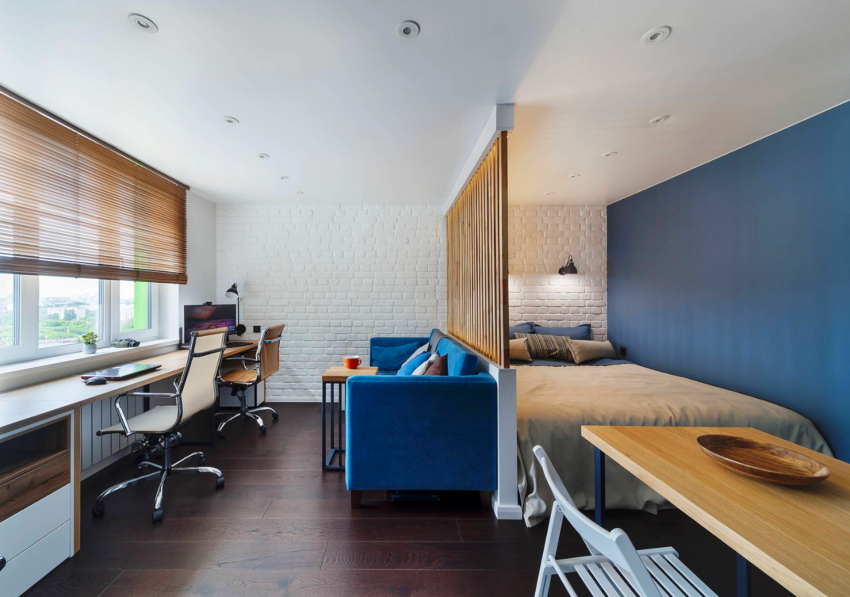
For a bed made according to individual parameters, you will have to order the manufacture of a mattress
Most Popular Standard Single Bed Sizes
There are not so many standard sizes of a single bed. Regardless of the type of bed with one berth chosen, whether it is an option with drawers or a bed equipped with a lifting mechanism, the size still meets certain standards:
- Bed width - from 70 to 120 cm; if the width is greater, then such a product is already considered one and a half.
- The length is usually 190 cm, but recently options up to 220 cm have become popular.
Custom-sized beds are usually ordered in increments of 5 cm, the most popular are parameters such as 185, 195 and 205 cm.
Below you can see a selection of photos of single beds, differing in various design options. The standard sizes of the products are usually selected for both adults and teenagers. Basically, there are beds that have the following parameters:
- 90x200 cm - made on a wooden or metal base, they can be used for teenagers and adults. It is easiest to choose a mattress and bedding for a product with such dimensions.
- 90x190 cm - used even for children from 3 years old. Therefore, if the size of the nursery allows, then immediately a small crib of a child can be replaced with a product of such a size, which will be enough for him for the next few years (unlike a model with a length of 160 cm).
One and a half bed size: standard options
A one-and-a-half bed is considered an ideal option, because its width is sufficient for a person of any size and for sleeping in any position. One and a half bed is also suitable for two people of small or medium build. In this case, you should also pay attention to your sleeping habits. Standard sizes of one and a half bed:
- 2000-2100 mm - length;
- 1200-1600 mm - width.
It is interesting! In Europe, they do not produce one and a half with a width of less than 140 cm.If this parameter of the berth is less, then the bed is considered a single bed.
American manufacturers distinguish three types of one-and-a-half beds, the sizes of which vary in a range similar to European and Russian standards:
- Small Double. It has a standard length of 1900 mm and a width of 1220 mm.
- Full or Double. It differs in length 1900 mm, width is almost equal to the standard and has 1372 mm.
- Queen. A bed with an extended berth up to 2032 mm, and the width of the product is 1524 mm.
Here you should also pay attention to deviations from standard Euro sizes in the dimensional grid of American beds. For example, for a bed that is 1524 mm wide, a 1500 mm mattress will not work. The difference between the dimensions of the frame and the mattress should not exceed 1 cm.
Size of a single bed and a lorry: how to determine the height
When choosing the optimal height, attention is paid not only to the height and age of a person.A very important criterion is the size of the bedroom where the product will be located. A bulky structure should not be installed in a small room.
Usually in small apartments it is recommended to place beds that are equipped with a lifting mechanism or built-in drawers (in small quantities). In a hidden space, you can easily place things that are not often used, as well as bedding or winter preparations. When organizing such a mini-pantry, one should not forget that the main purpose of the bed is a comfortable sleep. Depending on the model, the height of the bed with the mattress from the floor can have the following dimensions:
- podium beds or pull-out products are small in height, the average is 45 cm or less;
- a classic single or one-and-a-half bed measuring 90x200 or 140x200 cm is characterized by an average height of 50-65 cm;
- suspended structures are placed at different heights, which depends on the preferences of the owner;
- two-story products or loft beds have a height of 1 m and above.
Most often, when buying, people prefer beds, the height of which is 50 cm.Of course, here you need to take into account the height and age of the sleeper, as well as the presence or absence of bedside space. Drawers are considered convenient, but you need to calculate in advance whether there is enough space in the room so that it is convenient to slide them out and in.
Related article:
Double bed, sizes and standards: how not to be mistaken with the choice
Standards in different countries. How to choose textiles and mattress. Drawings of beds for self-production.
In a small room, it is better to give preference to products equipped with a lifting mechanism or loft beds, the dimensions of which can perfectly fit into the surrounding space. Also, do not forget that if the bed is too high and the person sitting on it does not reach the floor, then it will be uncomfortable for him to get up.
It is interesting! To find the required height of the product, you need to sit on the mattress with your feet flat on the floor. The best size is when the knees form a right angle. In this case, the height is considered correct and relieves the spine from unnecessary stress when standing up.
Structural elements of a one-and-a-half bed and a single bed
A one-and-a-half bed, like a single bed, has such basic elements as a frame, which can be with or without legs, and a frame. The bed frame consists of a back or headboard (there can be one or two of them) and tsars - special panels that limit the structure on the sides and add strength. There are the following main types of headboards:
- Stationary. It is usually the main element that contributes to the reliability of the structure.
- Attached. More often placed on the wall and complemented by shelves, bedside tables or small bedside tables.
- Wall. Attaches directly to the wall and is most often fitted with upholstery.
- Hinged. It is used for decorative purposes and does not carry a load.
An important structural detail is the frame, which determines the strength and stability of the bed. Long planks are usually used to make a solid frame, as well as a slab made of plywood, which is considered the most convenient and solid option. To increase the rigidity of the structure, metal pipes are often used.
The orthopedic frame is often supplemented with metal elements that are evenly distributed over the entire length. Special lamellas or logs are fixed on them, the step between which should be at least 5 cm.It is better when the slats are distributed more often and the step between them is 2-3 cm. The most expensive option is considered to be beds in which the slats are supplemented with rubber-plastic holders that provide good shock absorption and the correct position of the spine.
The main task of the slats is to maintain the rigidity of the structure, preventing it from sagging, therefore, the more of them, the higher the orthopedic properties of the bed. Also, many modern designs are equipped with a mechanism, using which you can change the angle of the lower or upper body. This will be especially true for people with various problems associated with the musculoskeletal system.
Helpful hints: how to choose the right bed frame
When choosing a frame, the first thing you need to pay attention to is the maximum load for which the product is designed. In this case, you should take into account not only your own weight, but also the weight of the mattress, bedding, and also additionally you need to take into account the weight of a person who will periodically use the bed, for example, the weight of children who come to lie down.
It should also be borne in mind that a single bed must be equipped with at least 4 legs, but it is better when an additional fifth support is installed in the central part. It is recommended to purchase a one-and-a-half bed with 5-6 legs. The additionally reinforced structure will allow you to safely use the bed without fear for its integrity.
The distance between the lamellas should be small, otherwise there is a risk of pressing the mattress springs. It is generally believed that the more lamellas, the more weight the frame can support. The height of the frame should ideally match the height of the person, especially if the bed is used by an elderly person who does not need excessive physical activity.
Important! It is necessary that the area of the frame exceeds the size of the mattress by 1 cm on each side.
Features of choosing a bed for a children's room
Furniture in the nursery must match the height and age of the child. Usually, a bed for a nursery is bought 2 or even 3 times - this cannot be avoided, even using sliding mechanisms and height adjustment. Important parameters for choosing such products are not only the length and width, but also the height of the bottom. Also, cribs are often equipped with additional mounts that protect the baby from falling asleep.
A safe option for an infant or a slightly older child is considered to be a structure equipped with a deep bottom and fences. Most often, such products are used up to 3 years, and sometimes longer. Additional parameters that characterize the crib:
- Bumpers. They can be wood or plastic and should rise to about 1/3 of the bed. There are stationary or removable sides, and it is better when they have soft protection.
- Stability. The product should be wide, because narrow and high cots are considered less stable, they can tip over during the active play of the baby on it.
- Lack of sharp corners and large distances between the rods. Children are distinguished by their ability to stick their heads where they should not, which is why it is necessary to estimate the distance between the barriers in advance and make sure that the child's head does not fit there. Any sharp corners are required.
Single and one and a half bed: sizes that fit a child's room
The standard sizes of a crib are characterized by certain indicators that vary depending on the age, as well as the height of the child.
0-3 years old. In this case, the optimal size of a single bed for children is 60x120 cm.In Europe, the standard is slightly different and is 65 x120 cm. Babies who are not very tall can sleep peacefully in such a crib up to 3-4, and sometimes up to 5 years. It is only required to monitor the height of the bottom.
3-5 years old. The width of a single bed for a child of this age is already close to standard. It can be 70, 80 or 90 cm, the length varies from 140 to 195 cm. The height of the bottom usually should not be more than 1 meter.
Schoolchildren from 6 to 17 years old. In this case, the standard bed sizes are used - 80x190 or 90x200 cm.
To save space in the nursery, bunk beds are often installed, the dimensions of which allow the use of the bedside space to install an extra bed, a wardrobe or a table for doing homework. This design is quite suitable for a schoolchild and is considered safe.
The height of the structure reaches 1.5 meters, and the size of the berth is usually 80 by 190 cm.If a small room of a teenager is being arranged, the best option to arrange a berth is a folding chair-bed, the size of which in the unfolded state corresponds to the standard 90 by 200 cm.
Helpful advice! If there is a concern that the child may fall at night, you can separately purchase a removable restraint, which is fixed to the side of the bed and prevents injury.
Folding sofa beds, the sizes of which are universal, are very popular in teenage rooms. In the unfolded state, the width of the sofa, equal to 80 cm, will be enough for one person to sleep. If desired, using a sliding mechanism, this parameter can be doubled or even more, the result is a one-and-a-half bed with a width of 160 cm and a standard length of 200 cm.
Sizes of semi-double beds with a non-standard shape
For people who want to comply with modern trends and decorate the interior according to new trends, the designers have developed furniture that is distinguished by its individuality. The most popular are round, oval, hanging and square options. The bed can be installed on legs or without them. The unusual design of the bed makes the room attractive and interesting. Among these options stand out:
- A round bed, which is considered the most popular among non-standard shapes. Here it should be borne in mind that the size of a single bed corresponds to a diameter of 2 meters, and a one-and-a-half product can be replaced with a round bed, the diameter of which is 210 cm.
- Square bed. Such designs are often made double, since it is simply unprofitable to make a one-and-a-half or single bed of a similar shape.
- Suspended model. To create such an option, a single bed with parameters 80-100 cm is more suitable, or a small lorry up to 140 cm wide, the length in this case is not very important. The main disadvantage is that the bed loosens quickly. Attached to the wall with cables, ropes or chains.
How to correctly match the parameters of the bed with the mattress
First of all, you need to remember that the size of a single mattress (or one and a half) must correspond to the parameters of the frame. Therefore, before buying a mattress, you should familiarize yourself with the characteristics of the bed. However, the most correct solution is to independently measure the parameters using a ruler, and this must be done on the inside of the frame. A situation in which the mattress is a few centimeters smaller than the frame is considered advantageous, because in this case it is easier to fill the sheet and turn the mattress over.
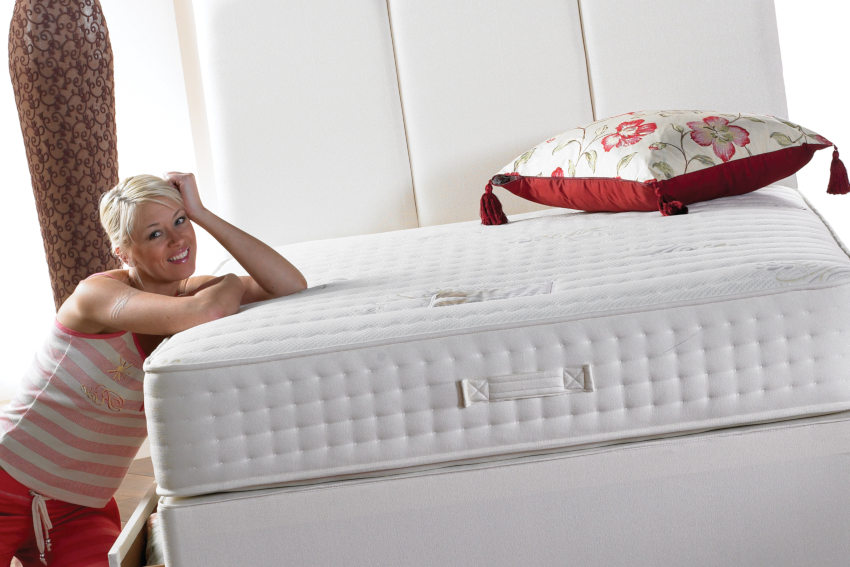
Dimensions mattress should be a few centimeters less than the bed parameters
If the bed was purchased in a store, then its parameters will correspond to the dimensions of the finished mattresses.Manufacturers often adhere to certain standards, but at the request of the client they make products of any size.
The most common length is considered to be 200 cm or 190 cm, some manufacturers create intermediate options, for example, 195 cm. The main condition when choosing the size of a mattress for a single bed is to take into account that it should be 15 cm larger than a person's height.
A single mattress is 80-90 cm wide, while the same indicator for one-and-a-half products is 120-140 cm.There are certain standard mattress sizes for a single bed and one and a half, which is clearly shown in the table:
| Bed type | Mattress size, cm |
| single | 80×190 |
| 80×200 | |
| 90×190 | |
| 90×200 | |
| one and a half | 120×190 |
| 120×200 | |
| 140×190 | |
| 140×200 |
Round single mattresses have a diameter of 200-210 cm, and average one-and-a-half - usually 220 cm.The height of the product depends on its type and usually varies from 15 to 24 cm and more, a significant part has a thickness of 16 cm. Spring mattresses are characterized by a height of 18 up to 32 and even up to 50 cm. Thin mattresses (2-10 cm) are used only as an additional seal.
Important! When choosing the size of the sheet for a single bed (or one and a half), you need to take into account that its parameters must match the dimensions of the mattress. This rule especially applies to sheets with an elastic band.
The most common size of a mattress for a newborn's bed is 60 by 120 cm, and the 70x140 cm option is also found. The thickness of products for children is usually much less - from 4 cm (coconut mattresses) to 18 cm (spring products). When choosing a height, you should pay attention to the height of the sides of the bed.
Correctly chosen size of a single bed or one and a half beds guarantees peaceful rest and healthy sleep. You should not chase space savings by purchasing a product that has minimal dimensions; because if it is uncomfortable to sleep on it, then a person will not be able to fully rest before the start of a new day. The choice of bed should be approached very responsibly.
